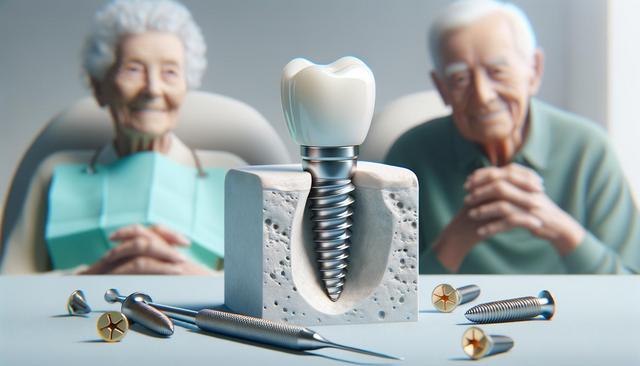Understanding Screwless Dental Implants
Screwless dental implants are a modern innovation in implant dentistry, designed to simplify the process of tooth replacement. Unlike traditional implants that rely on screws to secure the prosthetic tooth, screwless systems use advanced friction-fit or locking mechanisms to hold the crown in place. This alternative can be especially appealing for elderly patients who may have concerns about surgical complexity or long-term maintenance. The design minimizes small component use and often reduces the risk of complications associated with screw loosening or breakage.
For seniors who may already be managing various health concerns, the screwless approach offers a less invasive and more manageable option. These implants are typically easier to place and adjust, which can be crucial for individuals with reduced healing capacity or compromised bone density. In many cases, the simplified design also results in a shorter procedure time, reducing the stress and fatigue associated with longer dental surgeries.
Why They Are Suitable for the Elderly
Elderly patients often face unique challenges when it comes to dental care. Issues such as bone loss, gum recession, or systemic health conditions can complicate traditional implant procedures. Screwless dental implants address many of these concerns with a design that can adapt to the specific anatomical and health profiles of older adults.
Some advantages for the elderly include:
- Minimized surgical trauma due to simplified placement
- Reduced healing time and post-operative discomfort
- Lower risk of mechanical failure like screw loosening
- Less frequent need for complex maintenance visits
By easing the placement and maintenance processes, screwless systems contribute to a more accessible dental care experience for older patients. Additionally, the design often requires less bone density for successful integration, making it a more inclusive option for those with age-related bone loss.
Comparing Screwless and Traditional Implants
When evaluating dental implant options, it’s important to consider the differences between screwless and traditional systems. Traditional implants use abutment screws to attach the crown to the implant post. Over time, these screws can become loose or even fracture, particularly in individuals with weaker bone structures or bruxism (teeth grinding).
Screwless implants mitigate these risks by eliminating the need for screws altogether. Instead, they rely on mechanical locking systems or frictional fit to secure the prosthetic piece. This approach reduces the number of components involved, which in turn simplifies maintenance and minimizes the chances of failure. For elderly patients, who may have difficulty attending frequent dental appointments, this can be a significant advantage.
Another point of distinction is esthetics. Screwless systems often allow for more natural-looking restorations, as there is no screw-access hole that needs to be covered. This can enhance both confidence and satisfaction with the final result, which is particularly important for older individuals looking to maintain a dignified appearance.
Considerations Before Choosing Screwless Implants
While screwless implants offer many benefits, they are not suitable for every case. A thorough evaluation by a dental professional is essential to determine if this type of implant is the right choice. Factors such as jawbone health, oral hygiene habits, and overall medical condition play a critical role in the decision-making process.
Important considerations include:
- Bone density and volume in the jaw
- Patient’s ability to maintain oral hygiene
- Presence of systemic conditions like diabetes or osteoporosis
- Previous dental work and current oral health status
It’s also worthwhile to discuss the long-term maintenance and potential need for adjustments with a dental provider. While screwless systems are often easier to care for, they still require regular check-ups to ensure stability and overall oral health. The collaborative approach between dentist and patient is key to achieving a successful outcome, especially when working with older adults who may have complex health backgrounds.
Improving Quality of Life Through Innovation
One of the most compelling aspects of screwless dental implants is their impact on quality of life. For elderly individuals who may have struggled with removable dentures or missing teeth, these implants can restore function and comfort in a discreet, long-lasting way. Being able to eat, speak, and smile confidently can have a profound effect on emotional well-being and social engagement.
In addition to the physical benefits, screwless implants can offer psychological reassurance. The simplified design means fewer parts to worry about, which can reduce anxiety about potential complications. Many seniors appreciate the straightforward maintenance and the ability to regain a sense of normalcy in their daily routines.
Ultimately, the goal of any dental restoration is to support a healthier and more fulfilling lifestyle. With screwless dental implants, elderly patients have access to a solution that respects their specific needs while delivering functional and esthetic improvements that can significantly enhance quality of life.







